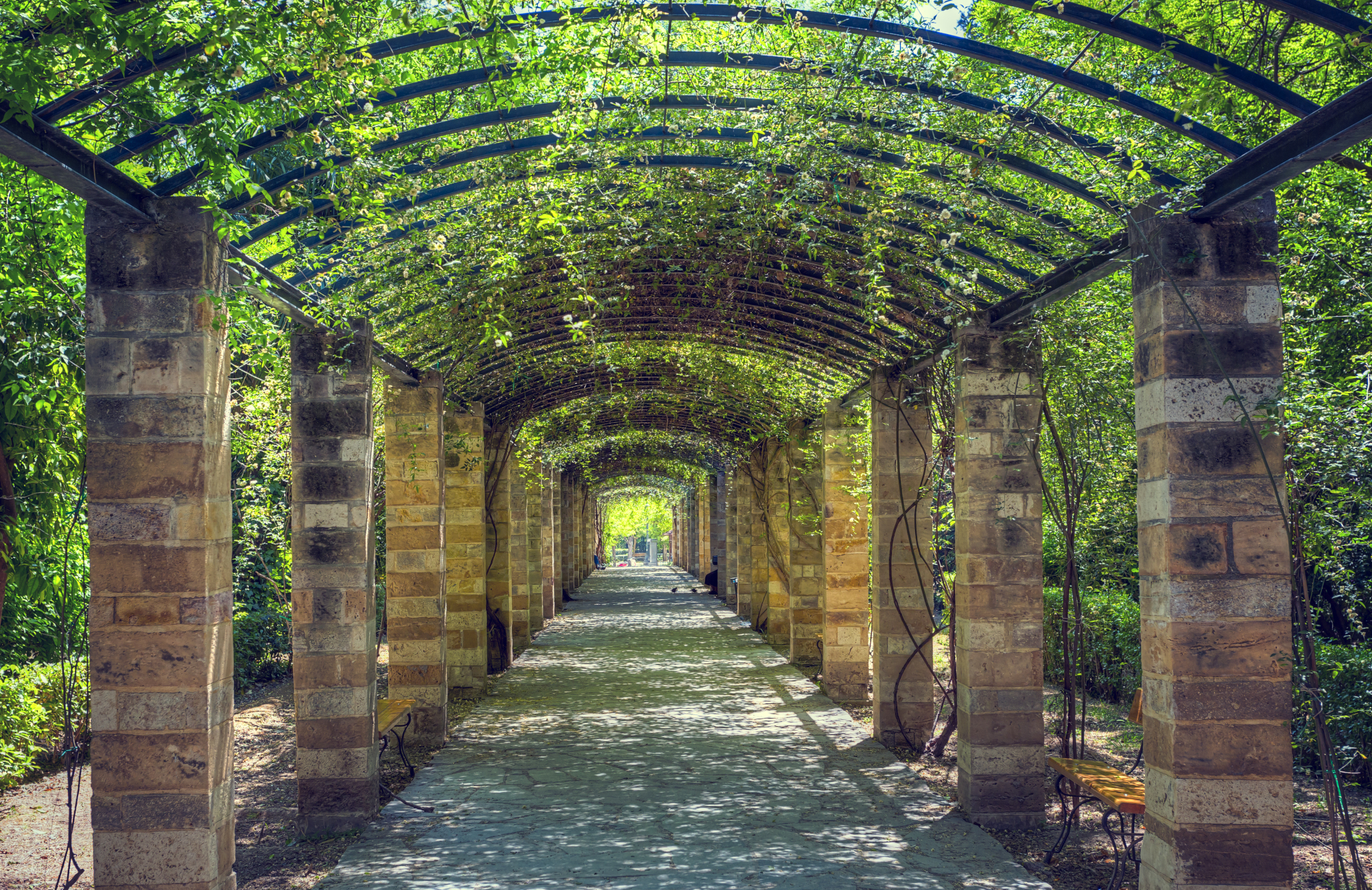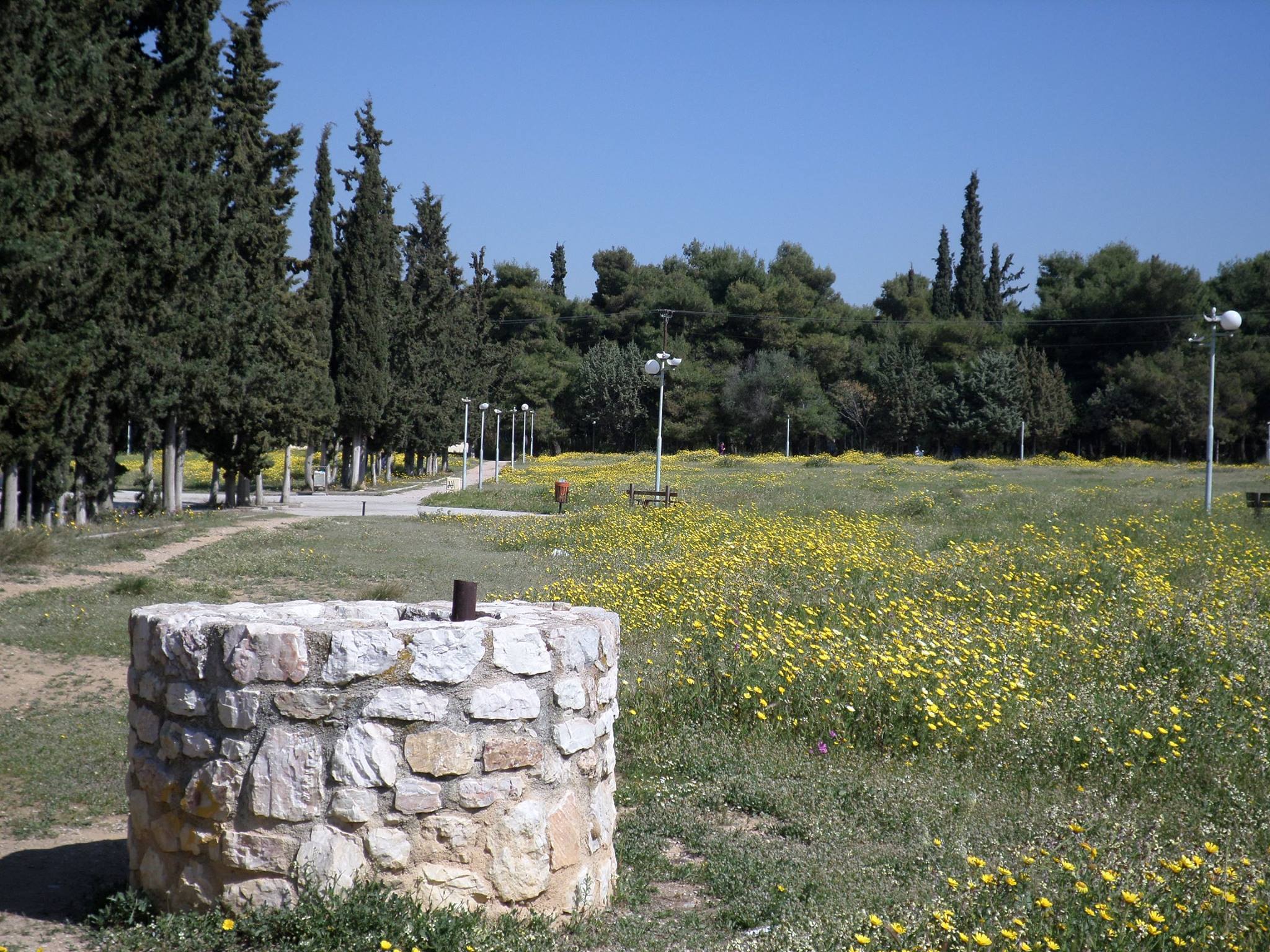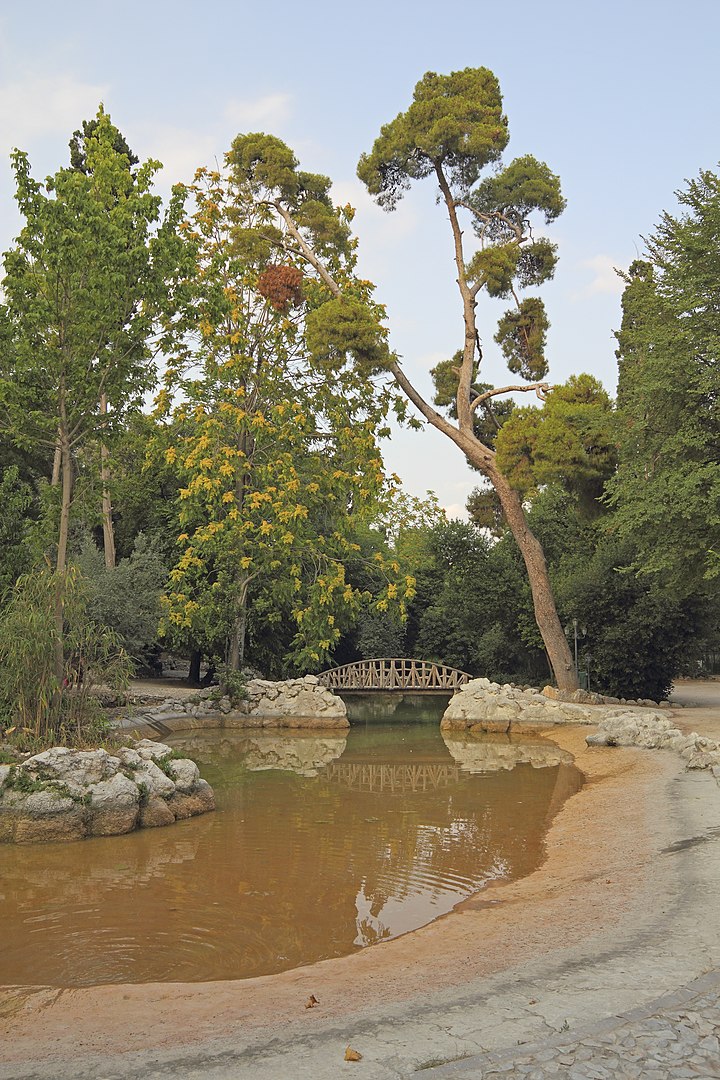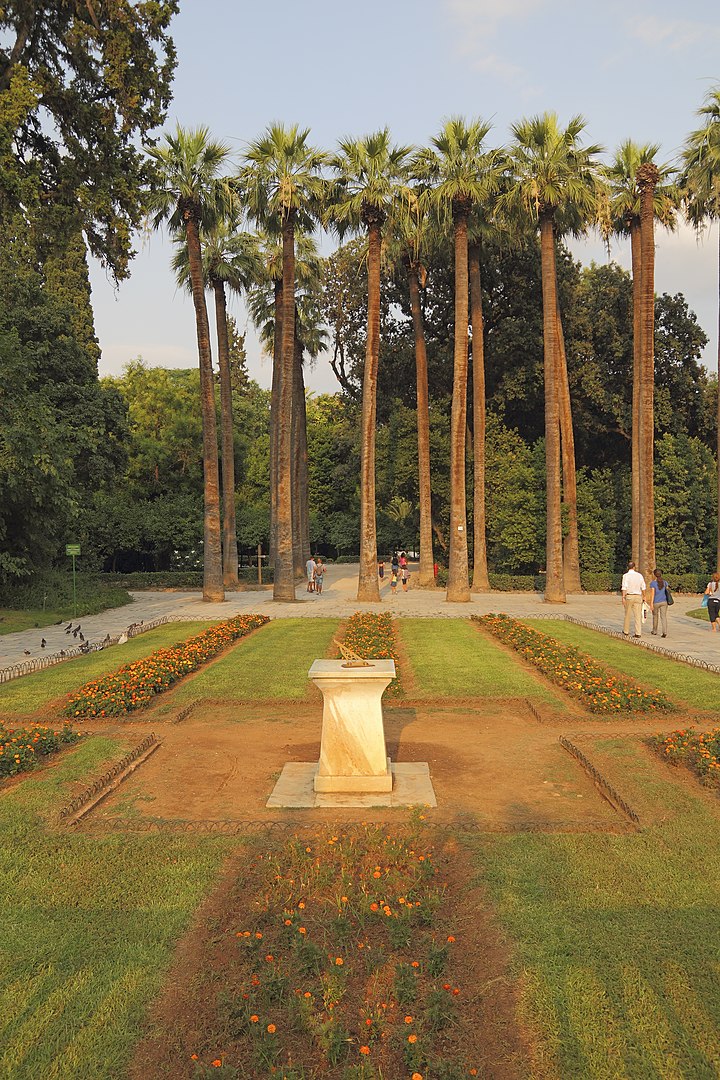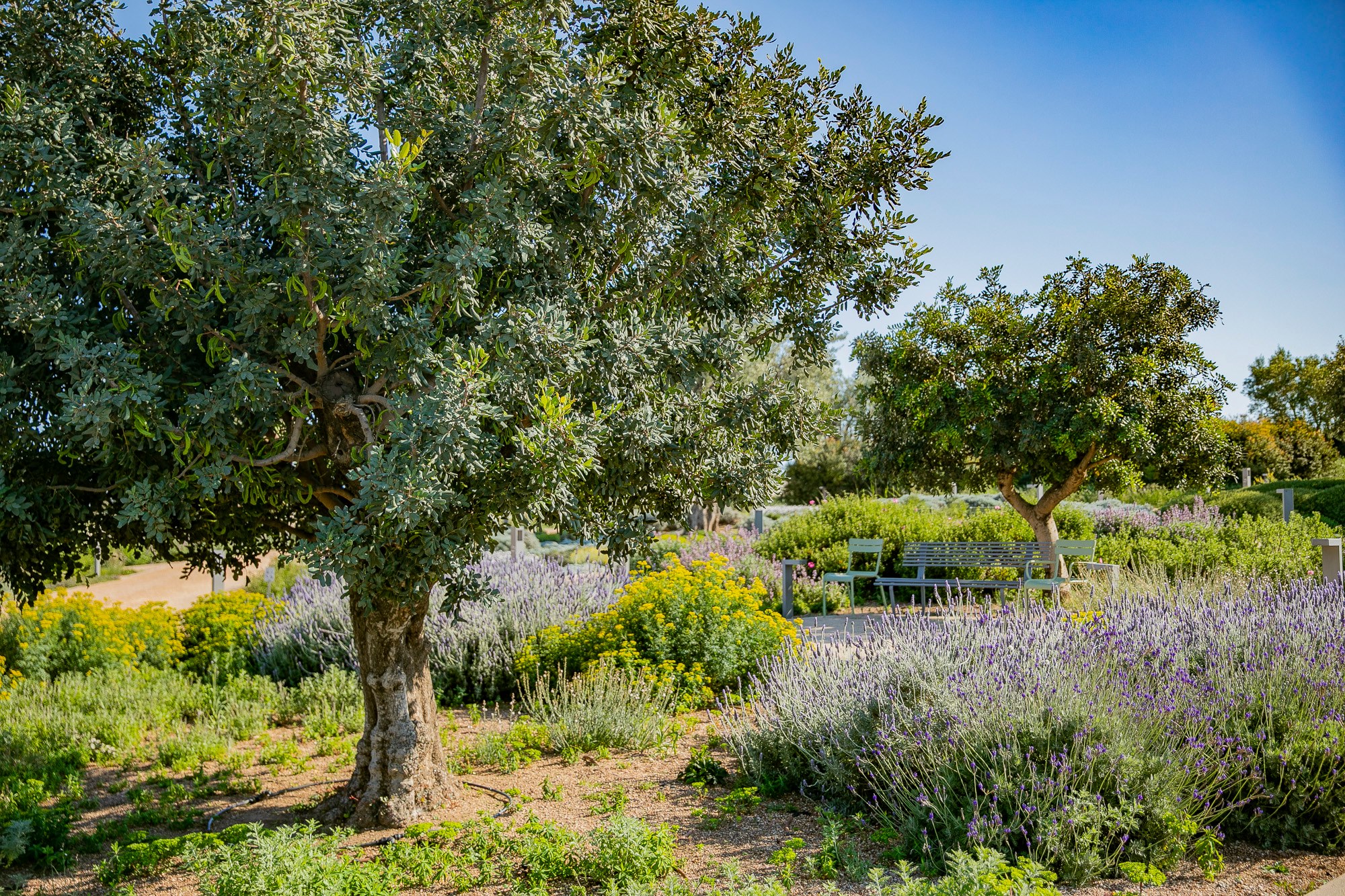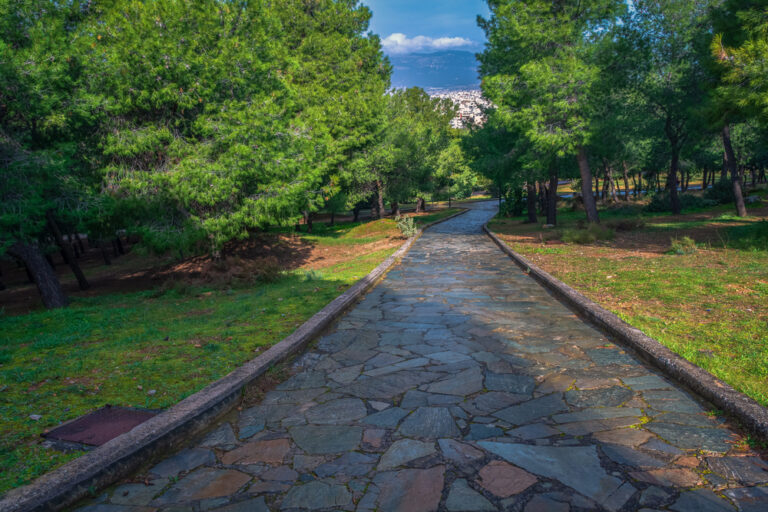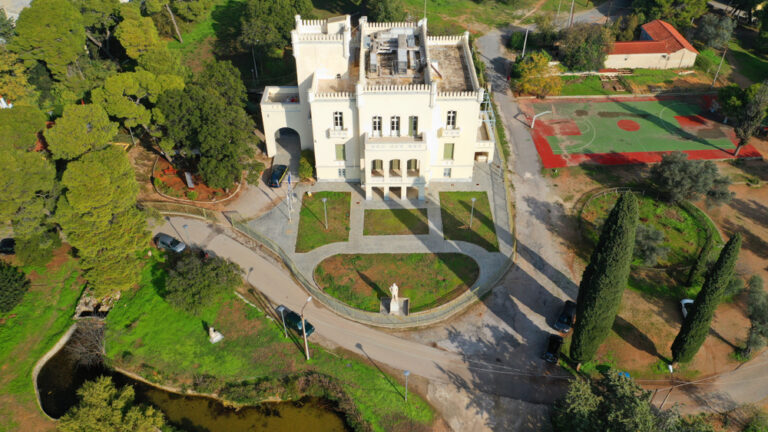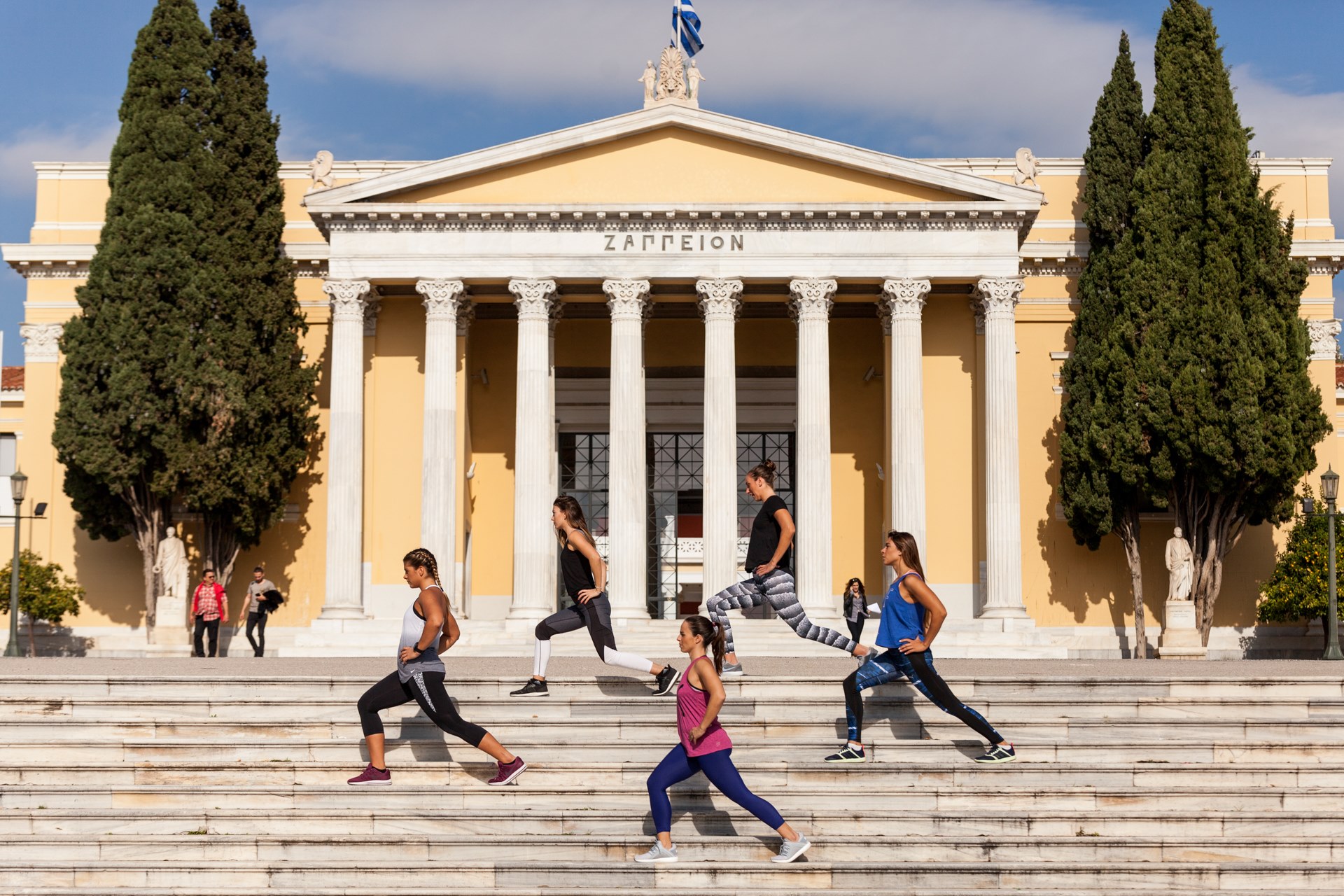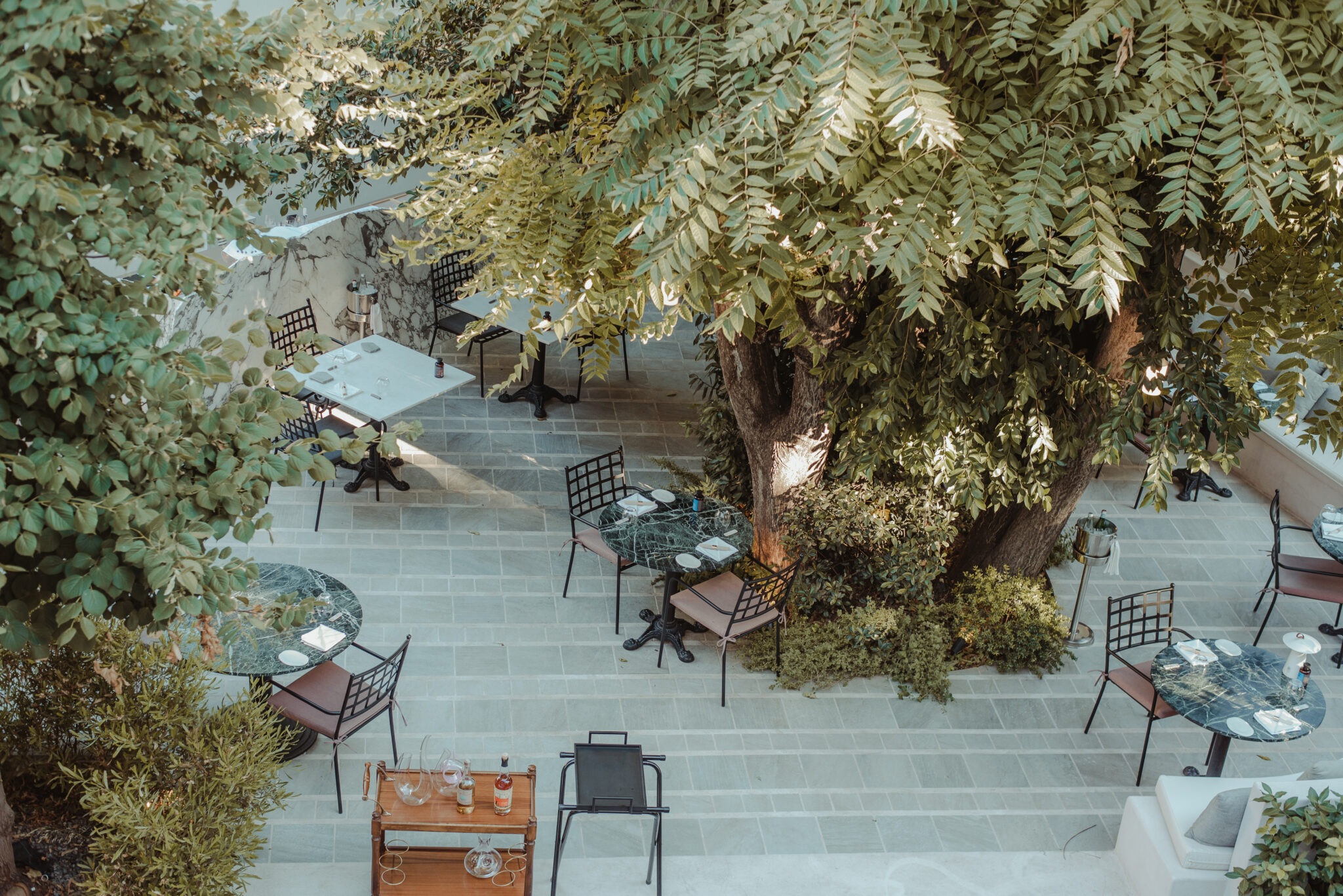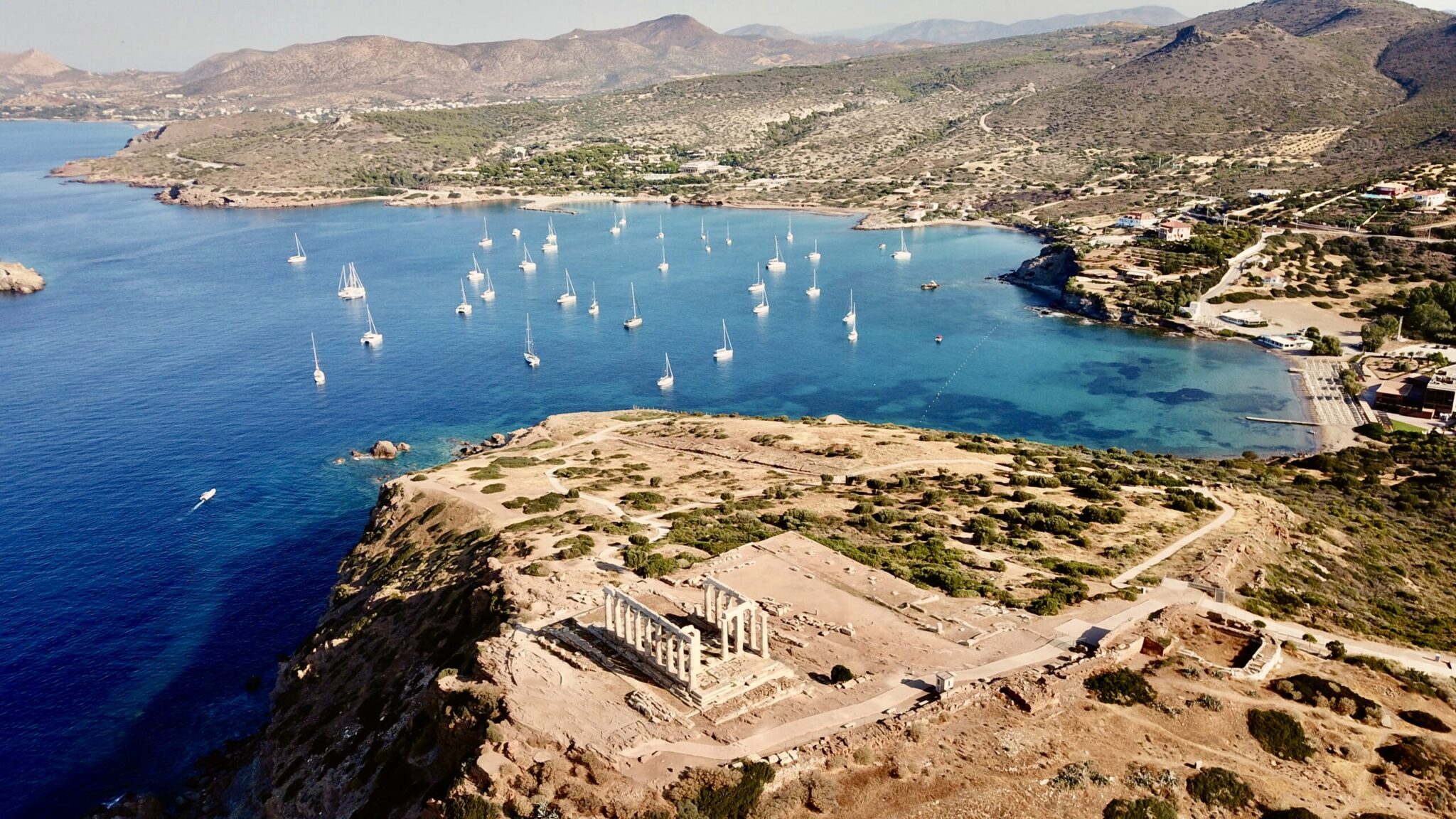Parks offer elegance to locations, add quality to outings, and offer necessary contact with nature.
Most Athenian districts offer small or large green spaces that can be enjoyed without having to cover great distances to reach, adding to the city’s attributes as a safe, attractive and multifaceted destination that offers many surprises and memorable experiences throughout the year.
Antonis Tritsis Metropolitan Park
Antonis Tritsis Metropolitan Park, in Ilion, west Athens, is one of the most enchanting parks of the wider Athens area. Covering 120 hectares at a location named Pyrgos Vasilissis (Queen’s Tower) or Eptalofos (Seven Hills), this park offers many routes ideal for relaxed strolls or cycling. Besides the lush nature, the park also features six artificial lakes that are interlinked by a canal. Numerous birds like to settle in the lakeside areas. The park was initially developed by Queen Amalia, spouse of King Otto, in the 19th century.
When the Royal couple moved to Athens from Nafplio, modern Greece’s first capital, between 1823 and 1834, Queen Amalia was determined to reshape the new capital’s green areas. As part of this plan, she bought property beyond the city’s limits to develop an estate, the current Antonis Tritsis Metropolitan Park, which, at the time, was double the size. Its grounds include the Gothic-style Queen’s Tower, which nowadays belongs to the Agricultural Commercial Company of Ilion SA, managing a 4-hectare vineyard at the location for its own wine production. Guided tours are offered at the Tower area, horse stables, vineyards and winery. For guided tour schedules and ticket prices visit pyrgosvasilissis.gr. A building at the park houses an exhibition titled “Ark of the Seeds”, a 12-metre-long wooden construction carrying phytogenetic material such as traditional seeds, fruit and plants in special cases for viewing through a large window screen. The exhibition at this building, situated next to another building hosting the park’s management, is ideal to visit with children, for an introduction to the biodiversity of Greek nature. Its entrance is at 23 Sp. Moustakli. Visitors may also enter the exhibition space upon arrangement with the park’s management (09:00-15:00, tel. +30 2102323163). The park hosts spots serving food and coffee, ideal for relaxation following your exploration of the park.
Park open 24 hours a day
Free admission. Entrances from Dimokratias, Moustakli and Fylis streets. parkotritsis.gr
National Garden
The National Garden, situated in the heart of Athens and measuring 154,000 square metres, emerged as modern Greece’s first organised garden space. Its development began in 1839, initiated by Queen Amalia. Approximately 15,000 ornamental plants were transported from Milan, other parts of Europe, north Africa, along with native plants, for the garden’s development, initially designed as part of the surrounding area of the palace, the modern-era Parliament building. The National Garden is an ideal place for a short or long break from the city’s frenetic pace.
Besides taking a stroll along some of the garden’s shady paths, visitors can also marvel at the hundreds of trees and plants, relax by the pond with ducks and swans, and visit the small zoo with ibex, peacocks and rabbits. The Roman mosaic floor, at the garden’s Vasilissis Sofias avenue end, and the sundial with gigantic and impressive Washingtonia palm trees behind it, by the Vasilissis Amalias Ave entrance, are other highlights.
While strolling around the garden, look out for the Amalia Rock – a protruding rock formation, behind the children’s playground, where the Queen had a seat installed to monitor the gardening activities – as well as the scores of statues scattered throughout the garden. They include busts of Ioannis Kapodistrias, modern Greece’s first head of state, the poets Dionysios Solomos – whose “Hymn to Liberty” was used for the national anthem – and Aristotelis Valaoritis, as well as sections of columns. Besides the pond, the children’s playground, the garden’s other big attraction for youngsters, surrounded by pine trees, is ideal for a carefree time.
A children’s library is also maintained within the garden’s grounds between 09:00 and 14:00. The library’s first section, a Swiss-style construction, was built in 1848 and served as the office space for French garden designer Louis Bareaud, who had been commissioned by Queen Amalia for the garden’s development. A charming small café, nestled amidst the greenery, is situated at the Irodou Attikou St end of the park. For persons with disabilities, access to the garden is easier from the Vasilissis Amalias Ave end, as well as from the Akakion Street entrance, close to the road.
Opening hours: The park is open from sunrise to sunset.
Free Admission
Entrances: Vasilissis Amalias Ave, two entrances at Akakion Street (behind the Zappeion building), two entrances at Irodou Attikou St (one near the garden café, the other opposite the Presidential Mansion). The entrance from Vasilissis Sofia Ave is currently closed due to projects in progress.
Stavros Niarchos Park
The newest park in the wider Athens area, Stavros Niarchos Park opened in August, 2016. Located in the Kallithea district’s Faliro Delta area, it emerged as a donation from the Stavros Niarchos Foundation and is incorporated into the Stavros Niarchos Foundation Cultural Center, which was launched several months later, in February, 2017. It is one of the city’s most impressive parks and has been designed to remind of rural Greece.
Spread over 21 hectares, the garden is an authentic Mediterranean setting with stone pines, cypress trees, plane trees and almond trees, as well as aromatic plants such as thyme shrubs, roses, rosemary, myrtles and Jerusalem sage. Many paths covering the garden’s expanse are ideal for a stroll or cycling. Bicycles, if you need, are available for rent at the SNFCC visitors centre. The park’s rich variety of flora can be explored via the extensive paths, while the lawn-covered open space is ideal for fun and games. Small rest areas, including tables for chess (chess pieces can be borrowed from the visitors centre) feature at various points around the garden’s network of paths. Reaching the SNFCC lighthouse, the park’s highest point, either with the elevator at the Agora or by covering an uphill section at the Stavros Niarchos Park, offers a great view of the nearby sea. Keep in mind, guided tours, free of charge, are offered daily at 18:00 (in English on Thursdays). Participants need to register beforehand, online at the SNFCC website. A variety of events, including top-class free concerts in the summer and sport activities, are staged at the SNFCC park. Stay informed through the SNFCC website.
Opening hours: Daily 06:00-24:00
Free entrance, 364 Syggrou Ave, Kallithea, snfcc.org
Veikou Park
At the northern end of the elevated Tourkovounia area, Veikou Park is a lush recreational space covering nearly 26 hectares. It was named after Labros Veikos, an 1821 Greek Revolution hero who hailed from Souli, in Epirus, northwestern Greece but lived in Athens’ Galatsi area for many years. Trees and a lawn create ideal spaces for relaxation and games, even picnics. Wooden kiosks and benches are scattered throughout the park. It is also perfect for cycling or relaxed strolls along the winding paths. This Athenian park is ideal for enjoying nature without needing to travel a distance.
Sports facilities, including a football pitch, basketball court and a swimming pool, feature at the park but membership is required for their use. However, a running track is free for all, as are the open-air gym’s fitness equipment and skateboarding area. The park also features an open-air theatre and cinema. If in the mood for more extensive exploration, walk uphill to the remains of the Zeus Ombrios temple, a point offering a marvellous view. Café-restaurants are also on offer at this park.
Opening hours: 07:00-22:00
Free entrance, Veikou & Anagenniseos, Galatsi
Syngrou Estate
Syngrou Park belonged to Constantinople-based entrepreneur and national benefactor Andreas Syngros and his wife Iphigenia Mavrokordatou. Following the death of Syngros’ widowed spouse, in 1921, the 95-hectare expanse was inherited, as instructed in her will, by the then-Hellenic Agricultural Society, with the intention to establish a school for livestock farming, poultry farming, bee keeping, silk farming and gardening.
Since 1998, the estate has been managed by the Institute of Agronomic Sciences and is under the control and supervision of the Ministry of Rural Development and Food. Syngrou Estate features a superb pine forest and is ideal for pleasant walks, games with children, exercise, or picnics with friends. While there, it is worth seeing Villa Syngrou, the listed building that served as the country residence of Syngros and his wife, and the neo-Gothic style Agios Andreas chapel.
Open daily from sunrise to sunset, free entrance, Kifissias Ave, Maroussi, dasosygrou.gr



